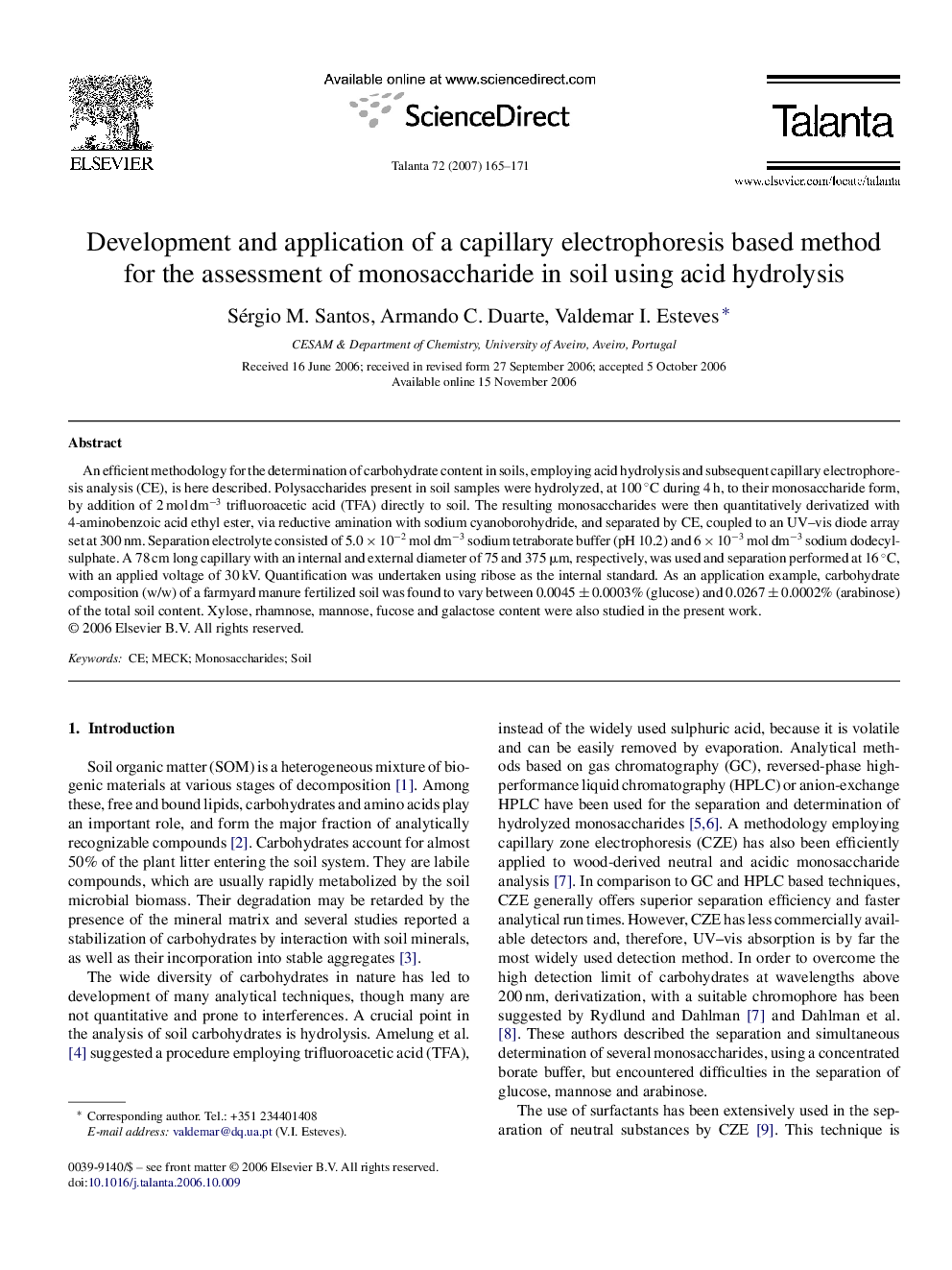| Article ID | Journal | Published Year | Pages | File Type |
|---|---|---|---|---|
| 1244012 | Talanta | 2007 | 7 Pages |
An efficient methodology for the determination of carbohydrate content in soils, employing acid hydrolysis and subsequent capillary electrophoresis analysis (CE), is here described. Polysaccharides present in soil samples were hydrolyzed, at 100 °C during 4 h, to their monosaccharide form, by addition of 2 mol dm−3 trifluoroacetic acid (TFA) directly to soil. The resulting monosaccharides were then quantitatively derivatized with 4-aminobenzoic acid ethyl ester, via reductive amination with sodium cyanoborohydride, and separated by CE, coupled to an UV–vis diode array set at 300 nm. Separation electrolyte consisted of 5.0 × 10−2 mol dm−3 sodium tetraborate buffer (pH 10.2) and 6 × 10−3 mol dm−3 sodium dodecylsulphate. A 78 cm long capillary with an internal and external diameter of 75 and 375 μm, respectively, was used and separation performed at 16 °C, with an applied voltage of 30 kV. Quantification was undertaken using ribose as the internal standard. As an application example, carbohydrate composition (w/w) of a farmyard manure fertilized soil was found to vary between 0.0045 ± 0.0003% (glucose) and 0.0267 ± 0.0002% (arabinose) of the total soil content. Xylose, rhamnose, mannose, fucose and galactose content were also studied in the present work.
